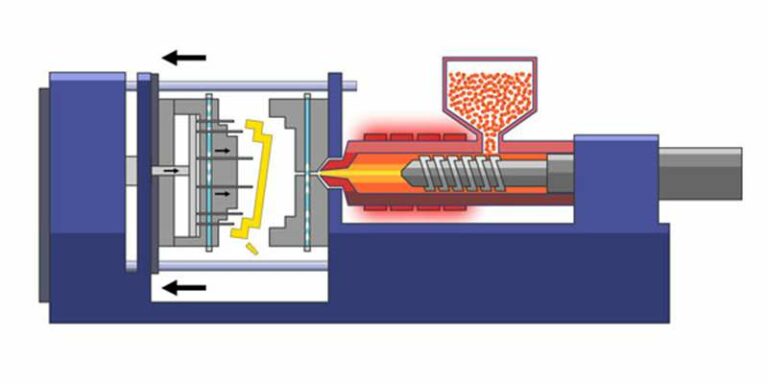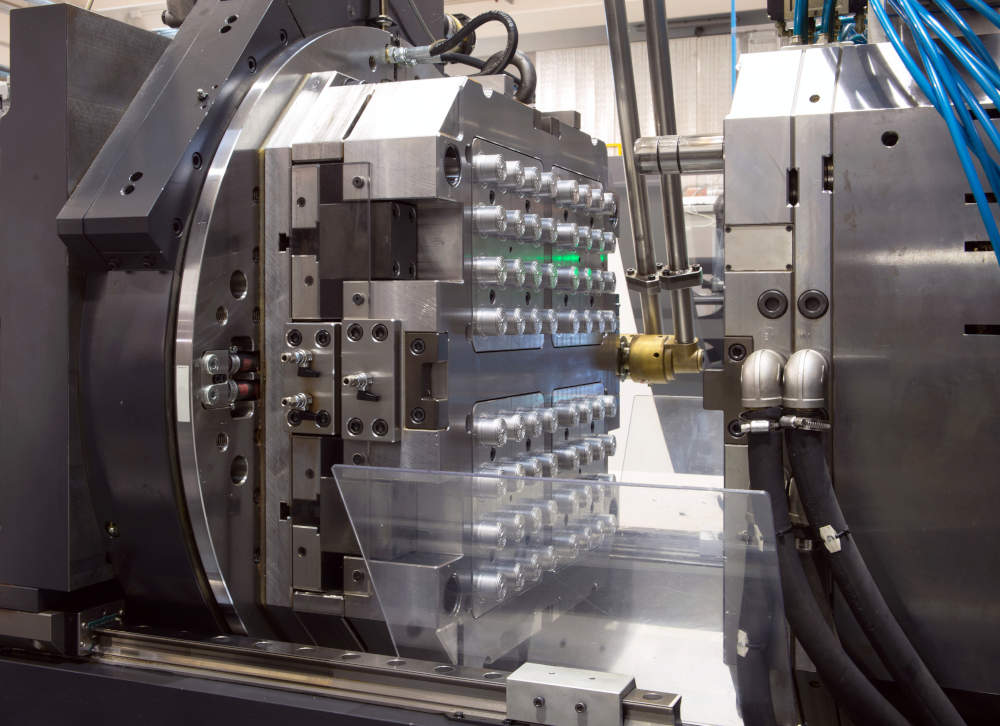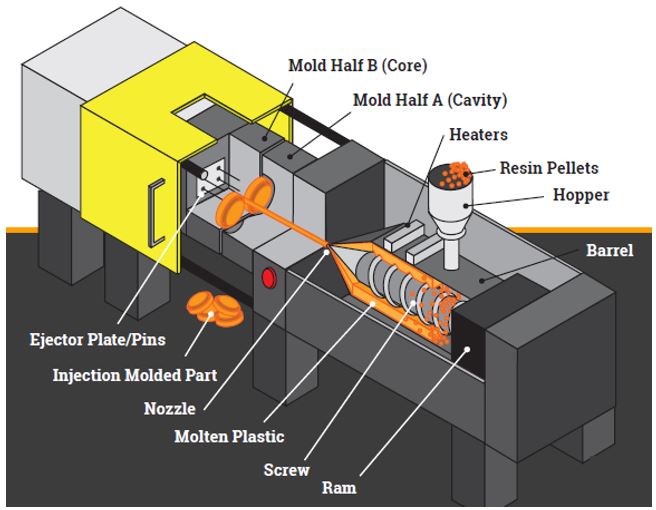Understanding the Fundamentals of Plastic Shot Molding Processes
Plastic injection molding acts as a cornerstone of contemporary manufacturing, supplying a systematic approach to generating complicated elements with accuracy. This process not only includes the basic steps of melting and injecting products right into mold and mildews but likewise involves a nuanced understanding of different influencing aspects, such as temperature level and pressure. As markets progressively require efficiency and top quality, the ins and outs of this method end up being a lot more critical. Exploring these necessary elements could reveal how even small changes can cause significant improvements in manufacturing results, increasing inquiries regarding the capacity for development in this well established procedure.
What Is Plastic Shot Molding?
Plastic shot molding is an extensively utilized production process that changes thermosetting and thermoplastic materials right into exact and complicated forms. This strategy is favored for its capacity to create high quantities of similar get rid of extraordinary accuracy, making it a vital method in different sectors, including vehicle, consumer products, and medical tools.
The process includes melting the chosen plastic material and infusing it right into a mold under high stress. The mold and mildew, developed to the specs of the wanted part, enables the liquified plastic to take shape as it cools down and strengthens. Once the material has solidified, the mold and mildew is opened, and the ended up part is ejected.
Plastic injection molding offers numerous benefits, consisting of reduced waste, uniformity in manufacturing, and the capacity to incorporate detailed styles that may be challenging with other making methods. Additionally, it supports a broad variety of products, each giving unique properties that can be tailored for certain applications. As markets proceed to introduce, plastic shot molding remains at the forefront, making it possible for the advancement of innovative items that satisfy advancing consumer demands.
The Shot Molding Refine
The shot molding process is an innovative strategy that entails a number of crucial stages to produce top quality plastic parts. Plastic pellets are fed into a heated barrel where they are melted right into a thick liquid. This molten plastic is after that infused under high pressure right into a precision-engineered mold and mildew, which shapes the material right into the preferred type.
As soon as the mold and mildew is filled up, the plastic is enabled to cool and solidify, taking the shape of the mold and mildew dental caries. Air conditioning time is important, as it affects the cycle time and the last buildings of the molded part. After enough cooling, the mold opens up, and the finished part is expelled making use of ejector pins.

Materials Utilized in Shot Molding
Different products can be made use of in the injection molding procedure, each offering special residential or commercial properties that accommodate certain applications. The most commonly utilized products consist of thermoplastics, thermosetting plastics, and elastomers.

Thermosetting plastics, like epoxy and phenolic resins, undertake a chemical modification throughout the curing procedure, resulting in a stiff, stringent framework. These products are optimal for applications calling for high heat resistance and architectural integrity, commonly used in auto components and electrical insulators.
Elastomers, consisting of silicone and rubber-based products, supply adaptability and strength. Their special homes make them appropriate for applications that require flexibility, such as seals and gaskets.
Furthermore, specialty materials like bio-based plastics and composites are obtaining traction for their environmental advantages and improved performance features, widening the extent of shot molding applications in numerous markets. Recognizing the residential or commercial properties of these materials is essential for selecting the ideal type for particular jobs.
Advantages of Injection Molding
Shot molding sticks out as an extremely efficient production process that uses numerous benefits for creating complex components with accuracy. Among one of the most substantial benefits is the capacity to create elaborate styles that would certainly be impossible or difficult to accomplish with various other techniques (Plastic Injection Molding). The procedure permits limited tolerances and comprehensive functions, making sure high-grade elements
Furthermore, shot molding is recognized for its rapid manufacturing capabilities, making it an optimal selection for high-volume manufacturing. Once the mold is created, parts can be produced quickly, minimizing preparations and increasing total productivity. This efficiency not just lowers production expenses however likewise gives an affordable side out there.
The flexibility of products made use of in injection molding better improves its appeal. A large range of thermoplastics page and thermosetting polymers can be utilized, allowing manufacturers to pick products that ideal meet their particular demands, consisting of flexibility, heat, and strength resistance.
Moreover, the procedure minimizes waste, as excess material can often be recycled and recycled. This sustainability aspect adds to a minimized ecological influence, making injection molding a liable production selection. Overall, the benefits of shot molding make it a favored method for numerous sectors.
Variables Impacting Product Quality
While countless variables can influence item high quality in shot molding, recognizing these aspects is important for accomplishing ideal outcomes. Secret facets include material selection, processing specifications, and find this mold and mildew layout.
Product option plays a crucial duty, as different polymers display distinct buildings that affect flowability, strength, and thermal stability. Inadequate material option can cause flaws such as warping or incomplete filling.
Processing parameters, consisting of stress, temperature, and cycle time, need to be diligently regulated. Variants in these settings can cause inconsistencies partially dimensions and surface coating. For example, exceedingly high temperature levels might trigger degradation of the polymer, while insufficient pressure can result in short shots.
Mold design is just as crucial, as it identifies the circulation of the molten plastic and the cooling procedure. Badly designed mold and mildews might lead to uneven air conditioning rates, causing dimensional mistakes and residual stresses.

Verdict
Finally, plastic injection molding works as a vital manufacturing process that makes it possible for the effective production of top notch parts. Mastery of the injection molding procedure, consisting of the understanding of materials and the impact of different aspects on item high quality, is essential for achieving optimal outcomes. The benefits of this approach, such as cost-effectiveness and layout adaptability, additional underscore its significance across multiple sectors, strengthening its condition as a favored option for high-volume production.
Plastic shot molding serves as a keystone of contemporary production, giving a systematic approach to creating intricate elements with accuracy.Plastic shot molding provides several benefits, including reduced waste, consistency in production, and the capacity to integrate intricate layouts that might be challenging with various other manufacturing techniques (Plastic Injection Molding). As sectors proceed to innovate, plastic shot molding remains at the leading edge, allowing the development of sophisticated products that satisfy developing consumer needs
The injection molding process is an innovative method that entails a number of vital stages to create premium look here plastic components.In final thought, plastic shot molding offers as an important manufacturing process that makes it possible for the efficient production of premium elements.